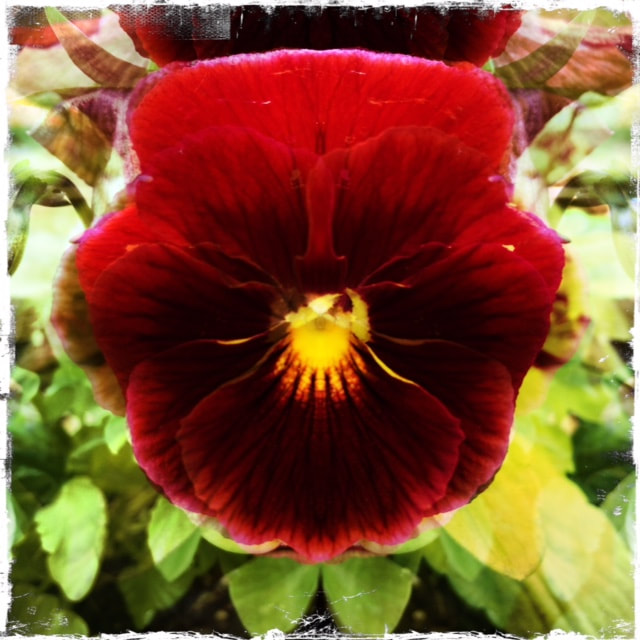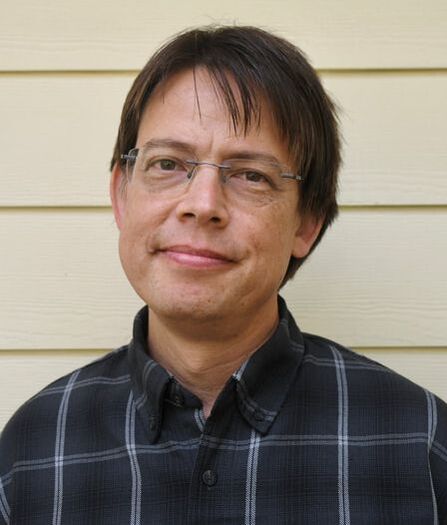ASSAY: A JOURNAL OF NONFICTION STUDIES
8.2
8.2
Writing about Blind Man’s Bluff, I stumbled through the dark of my own assumptions. Describing the book as insightful or vivid or enlightening, I collided with the very problem the book—should I say illuminates? Reveals? Depicts? It occurred to me only later that this uncertainty may have been the point, that Hill means to unsettle, even as he entertains. To both welcome and challenge the sighted reader.
Because the book is entertaining—moving, funny, and well-written—the challenge is easy to miss. Blind Man’s Bluff does not appear to disturb the conventions of memoir. It is not fragmentary or obviously theoretical. It tells Hill’s story, mostly in first person, mostly in chronological order, beginning with his loss of sight as a teenager. From high school onward, he adapts and denies, evolving elaborate stratagems to conceal his lack of sight. He becomes a writer. He has a series of relationships. These collapse, as does his first marriage; blindness, or rather his denial of blindness, is implicated throughout. In time, though, he begins to question his deceptions. He finds someone who accepts him as he is. The novelist who recoils at the idea of writing about his blindness becomes the author of Blind Man’s Bluff. He owns and claims his disability. A tidy arc. You can read Blind Man’s Bluff this way, and you wouldn’t be wrong. But what to make, then, of the epigraph (from Michael Chabon’s Wonder Boys): “Writers, unlike most people, tell their best lies when they are alone”? When I reread that epigraph, the book shifted beneath my feet, its ground less solid, uncertain. What does it mean to frame a memoir by equating writers with liars—with a quotation from a novel, no less? To whom are these lies directed, and in what sense are alone-lies different from in-person ones? What defines the “best”— beauty, plausibility, their ability to reveal a larger truth? If an author warns the reader that he might be lying, does this alter, or mitigate, the lie? And most of all, what does the foregrounding of the lie have to do with the book’s portrait of disability? I don’t think that Hill means to raise questions about his reliability—at least, not in any simple way. (His visual field may be fragmented, but Blind Man’s Bluff is not A Million Little Pieces.) I do think, though, that the epigraph unsettles the relationship between writer and reader. The epigraph might be read as a friendly caution: don’t take the writing, or the writer, for granted. By introducing uncertainty about the words to follow, the epigraph suggests that the meaning of the account, like the meaning of blindness itself, may not be what it seems. In that uncertainty is the rationale for memoir. If blindness is only disease and affliction, then what story could there be? Why inquire into a condition whose meaning is already known? But if the meaning of blindness is negotiable, produced and reproduced in the synapse between the writer and the world—and then between writer and reader—then there’s a story to tell and a subject to explore. Like many other disabled writers, Hill resists a medical model of disability, illuminates stigma, points to inaccessible environments, contrasts interior experience with external stereotype, acknowledges difficulty while refusing tragedy, and shows that disability’s meaning is open, negotiated day by day, encounter by encounter. Throughout Blind Man’s Bluff, we see Hill representing himself to the sighted. But the self-representations within the text are intimately linked to the self-representation that is the text, and Hill’s encounters are ultimately part of a meditation on the reading experience itself. Even as Hill shows himself negotiating the meaning of his blindness with others, he highlights his ongoing negotiation with the reader.
|
|
George Estreich's publications include a book of poems, Textbook Illustrations of the Human Body, which won the Gorsline Prize from Cloudbank Books (2003); the Oregon Book Award-winning memoir The Shape of the Eye (2011); and Fables and Futures: Biotechnology, Disability, and the Stories we Tell Ourselves (2019), which NPR's Science Friday named a Best Science Book of 2019. He's also the co-editor, with Rachel Adams, of Alison Piepmeier's posthumously published book, Unexpected: Parenting, Prenatal Testing, and Down Syndrome (NYU, 2021). Estreich has published prose in The New York Times, Salon, The American Medical Association Journal of Ethics, Tin House, Essay Daily, and McSweeney’s Internet Tendency. He lives in Corvallis, Oregon, where he teaches in the MFA program at Oregon State University.
|

